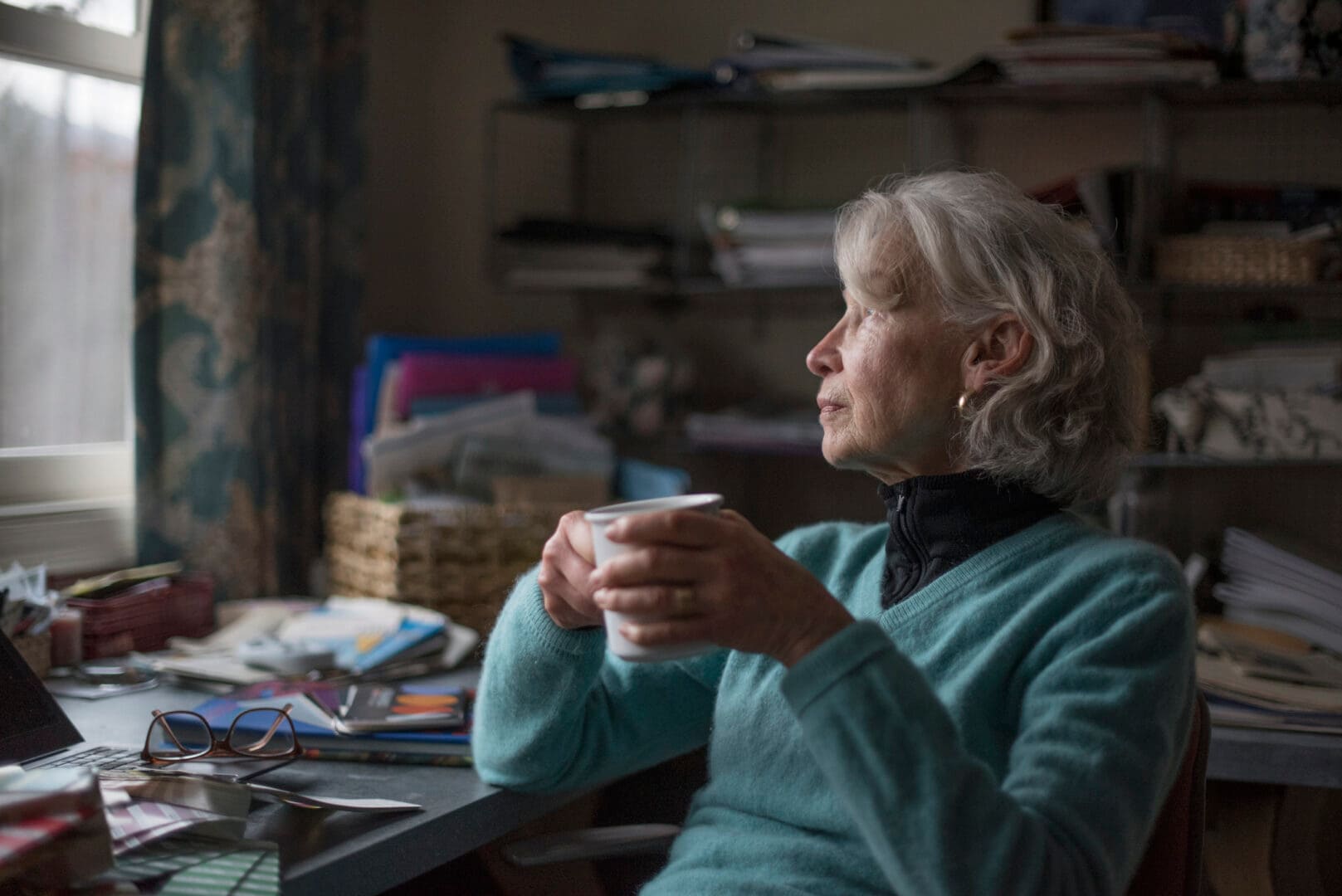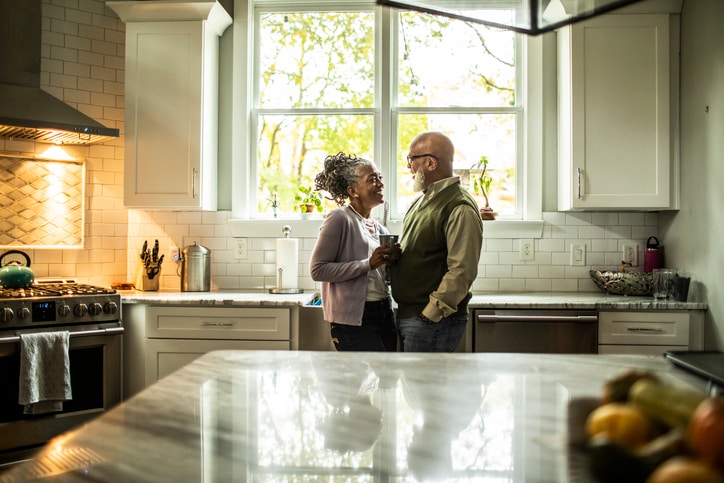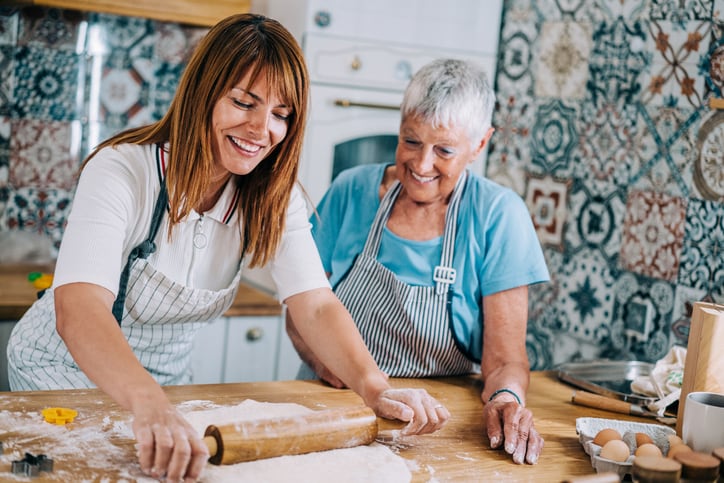As your parents get older, you may start to notice disorder around their home. Whether it’s a result of an accumulating pile of grandchild art or the sheer fact that, well, they’ve been alive a long time, a clutter home isn’t ideal for older adults. Also, it isn’t rare.
“Clutter is extremely common in older adults,” says Dr. Adele L. Towers, Associate Professor of Medicine and Psychiatry Division of Geriatric Medicine at the University of Pittsburgh School of Medicine. “For many, there’s a sense of security or fond memories that possessions provide, with the latter being especially difficult to let go. However, clean, uncluttered space is very therapeutic, both physically, as there’s less risk of falls, as well as emotionally.”
Feel like you should talk to your aging parent about their cluttered, disorganized space, but don’t know how? Read our expert tips for how to broach the subject, along with why it’s important.
Why older people have a hard time paring down possessions or organizing clutter
According to both Towers and Dr. Sakina Ouedraogo Tall, a geriatric medicine specialist and Clinical Assistant Professor of Medicine at NYU Langone Health in New York City, there are a number of reasons older folks find it difficult to deal with clutter, including:
Residual fear
“Many adults grew up in a time where luxuries were scant, so having possessions can be important to them,” says Towers. “It can be a protection from the fear of ‘losing everything.’”
Nostalgia
“The sentimental memories that people have regarding their belongings is a big reason for clutter,” adds Towers. “We all want to leave items of value to our children, but beauty is in the eye of the beholder, of course. I can tell you from a personal perspective that my children don’t necessarily want the things that I have carefully saved over the years.”
Physical and sensory limitations
“Physical weakness, joint pain or other issues can affect older adults’ ability to physically organize and get rid of or sort their possessions,” notes Tall. “Sensory limitations can hinder organization, as well. For example, visual impairment can limit their ability to see what to organize.”
Cognitive impairment
“For some, cognitive impairment can be the culprit,” explains Tall. Keeping clutter at bay can be difficult, if not impossible, if their “judgment, visuospatial or executive function or memory has been affected.”
How to determine if clutter is a problem for an aging parent
According to Tall, clutter becomes an issue when it negatively impacts a living space by causing risks to safety, health and quality of life. “Clutter in houses is common and difficult to dissociate from tripping hazards,” she says, citing a 2020 study that revealed that “26.5% of community-dwelling older adults had clutter or tripping hazards in the home.”
That said, keep in mind, everyone’s definition of clutter is different. “Some people might be under-estimating clutter in their home, while others over-estimating the volume of clutter due to their level of comfort living in their environment or their perceptions of what they qualify as clutter,” explains Tall.
“Hoarding disorder starts at a younger age and worsens with aging, so adult children should be able to remember if they grew up in an uncluttered house.”
—Dr. Sakina Ouedraogo Tall, geriatric medicine specialist
How to know if a cluttered space indicates a hoarding disorder
While cluttering and hoarding might lead to the same result — the inability to safely use a living space — they are not the same thing.
“Cluttering is the accumulation of possessions in an individual’s home,” says Tall. This often develops over time and can vary in severity. “It can be unrelated to an underlying psychological disorder, but sometimes is present, too,” she notes.
Tall explains that, on the other hand, hoarding is a psychological disorder, defined by the American Psychiatric Association (APA). “It is characterized by an extreme and persistent difficulty in getting rid of possessions, regardless of their actual value,” she says. “Attempts to part with possessions create clinically significant distress and impair functioning, as well as resulting in accumulation that disrupts the ability to use living spaces.”
If you think your aging parent may have hoarding disorder, it’s important to enlist the help of their physician to address the situation, according to Tall. But keep in mind, hoarding is rare. According to the APA, the overall prevalence of hoarding disorder is approximately 2.6%. Also, it isn’t something that suddenly crops up.
“Hoarding disorder starts at a younger age and worsens with aging, so adult children should be able to remember if they grew up in an uncluttered house,” says Tall.
How to talk to aging parents about clutter
Asking an aging parent to pare down their belongings can be a sensitive topic, so being mindful about how you broach the subject is important. “When discussing clutter and disorganization with aging parents, it’s important to avoid a confrontation,” Tall says. “And keep in mind, self-assessment of clutter can be subjective.” In other words: If you broach the subject in the wrong way, it may feel out of left field.
Here are a few tips for having a compassionate, respectful discussion:
1. Talk about objectives
“Start by asking aging parents what their goals are with their belongings,” Towers says. “Ask if there any items in particular that they would like to discuss and share why they’re important. Once you get them on a path of talking about their possessions, then you can bring up the topic of gifts or donations. The worst thing to say is that these items should be thrown away.”
2. Get personal
“Share how you’ve handled clutter in your own home,” says Tall. “This can lead to constructive discussions on the topic and communicate that you’re open to offering help if they feel they need assistance.”
3. Include them in the decision-making process
“Offering help while respecting their independence and dignity is key, according to Tall. “Asking parents what matters to them and incorporating this into decision-making can be very helpful,” she says. “This can help children focus on what parents are willing to do and avoid areas that could cause conflict.”
4. Compromise
“Remember, the goal is to preserve older adults’ quality of life while ensuring safety,” notes Tall. “Compromise is key. It’s important to respect aging parents’ feelings, independence and dignity, while not having these choices negatively impact their living space.”
5. Avoid saying “throw out”
“Look for alternatives to ‘throw out’,” Tall says. “For example, moving items out of the way, such as to the attic or storage, can help address clutter without triggering the same resistance as discarding it entirely.”
“The biggest challenge is when aging adults are not able, or refuse, to see that clutter is an issue for them and that it is having a negative impact on their safety or quality of life.”
—Dr. Sakina Ouedraogo Tall, geriatric medicine specialist
6. Enlist a physician’s help, if necessary
“The biggest challenge is when aging adults are not able, or refuse, to see that clutter is an issue for them and that it is having a negative impact on their safety or quality of life,” explains Tall explains. “In this case, it may be a good idea to involve their physician for an evaluation to determine if this is symptomatic of cognitive impairment, depression or visual issues that may be preventing them from acknowledging the issue.”
She adds that the physician can also be a “trusted authority” who may be able to help the adult see that clutter is an issue for them and to accept help. “Many aging adults are sensitive to taking direction or advice from their children, and the physician can help in this regard,” she notes.
The benefits of reducing clutter for older adults
When older adults keep their homes organized and uncluttered, there’s an increase in their safety, health and quality of life.
“Cluttered living spaces pose a risk for falling or injury as they are difficult to navigate, and this risk only increases with further physical deconditioning as we age,” says Tall. “Cluttered environments are also more difficult to manage and clean, which can lead to excessive dust and poor air quality, as well as being an invitation to pest infestations. Additionally, having ‘stuff’ everywhere can be a fire hazard, both in allowing fires to start or spread, as well as being able to escape.”
Having the clutter conversation can feel daunting, but it’s important to do — and it may go better than you expect.
“The trajectory of the conversation mostly depends on how an aging adult feels about their home and whether they acknowledge and agree that clutter is a problem, as well as how they feel about their ability to maintain independence,” says Tall. “Some may want to handle things themselves, while others may have good insight into their cluttered home and be open to accepting help when it comes to cleaning and organizing.”



